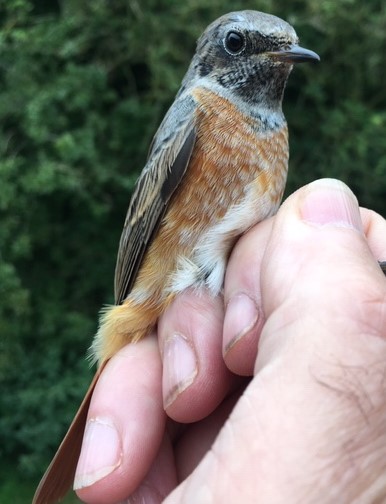The first three days of this week have been really good. The period started well when Kev had a session at Belvide on Monday. With only a small number of nets open he managed to ring 35 new birds, of which 13 Blackcaps and another Cetti's warbler were the highlights.
While setting the nets for this morning on Tuesday evening Paul ringed another 8 new birds.
As usual, we had been watching the weather forecasts avidly with respect to this morning as it was clear that some really windy and wet conditions were on their way--but when? To be fair the forecasters got it pretty well spot on this morning--after a pre-dawn start, we kept a close eye on the rain radar and decided at 8.40 to wrap up. Although we were sorry to finish so early, it turned out to be exactly the correct decision as steady rain started as we walked back to the cars.
Even though it was a truncated session, such was the movement of birds that we ringed 104 new birds. Most of which -again-were migrant warblers. Blackcaps are building momentum with 42 ringed this morning, and strangely Willow warblers outnumbered Chiffchaffs, by 11 to 3. It's looking as though we will have a record year for Willow Warblers.
Without question the star bird of the morning was this season's first ( and probably only) Grasshopper Warbler.. As you can see from the picture, these are not especially stunning looking birds but they are tricky to see in the field because of their skulking behaviour..
This picture shows most of the salient features--short wings, mottled back, head and shoulders, and a quite long rounded tail. The very heavy wear on the tail and wings on this bird show it is an adult.
We also caught yet another Kingfisher--there is a family party neat the ringing site, and this time we caught a juvenile male.
Although there is a suggestion of a tinge of red on the lower mandible we are inclined to call this bird a male, as the juvenile females we have caught have much more obvious red on the lower mandibles. The ageing feature I wanted to show on this bird is the 'greeny-blue' colour of the wings compared to the 'bluey-green' colour of the adult wing in my previous Kingfisher picture






















